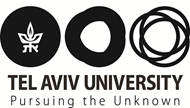

Prof. Michael Urbakh
Exact Sciences
The aim of the research project is to develop state-of-the-art force-fields for the accurate and efficient description of interlayer interactions in hexagonal layered materials and their utilization for modeling the structural, mechanical, and frictional properties of complex interfaces. During recent years, our team has successfully developed such classical potentials for pristine graphitic, hexagonal boron-nitride (h-BN), and transition metal dichalcogenides (TMDs) based systems and their heterojunctions, and applied them to a variety of problems.
To address the challenging problem of reactive layered interfaces, we have recently adopted an advanced machine learning approach and applied it to investigate the effect of interlayer binding on the friction in defected graphitic interfaces.
Exact Sciences
- School of Chemistry
The aim of the research project is to develop state-of-the-art force-fields for the accurate and efficient description of interlayer interactions in hexagonal layered materials and their utilization for modeling the structural, mechanical, and frictional properties of complex interfaces. During recent years, our team has successfully developed such classical potentials for pristine graphitic, hexagonal boron-nitride (h-BN), and transition metal dichalcogenides (TMDs) based systems and their heterojunctions, and applied them to a variety of problems (see references below).
To address the challenging problem of reactive layered interfaces, we have recently adopted an advanced machine learning approach and applied it to investigate the effect of interlayer binding on the friction in defected graphitic interfaces.
Selected Recent References:
- ACS Nano 18, 10133-10141 (2024).
- J. Phys. Chem. A 127, 9820-9830 (2023).
- Nature, https://doi.org/10.1038/s41586-024-07243-0 (2024).
- J. Mech. Phys. Solids 185, 105555 (2024).
- Nature 612, 465-469 (2022).
- Phys. Rev. Lett. 129, 276101 (2022).
- Science 372, 1462 (2021).
- Phys. Rev. Lett. 126, 216101 (2021).
- Phys. Rev. Lett. 122, 076102 (2019).
- Nature 563, 485-492 (2018).
- Nat. Mater. 17, 894-899 (2018)
The recruited post-doctoral fellow will extend this work towards more challenging scenarios, including heterojunctions of defected reactive graphene, h-BN, and TMDs, healing processes, effects of edge chemistry, and intercalated contaminants.
To that end, they will develop machine learning potentials based on ab-initio reference data, as well as quantum tight-binding simulation tools. Such computational capabilities are expected to be of interest not only to the scientific community but also to the electronics industry, which is interested in modeling such structures.
Period: The position is for one year with a possible extension to a second year.
Scholarship: A monthly scholarship of 10,000 NIS (2,682 USD at the current currency exchange rate) will be given. Additional funds will be available pending successful applications of the grantee to international, national, and internal Tel Aviv University scholarships.
Ph.D. in Chemistry, Physics, and/or Materials Science and Engineering.
Application Deadline: September 30, 2025

